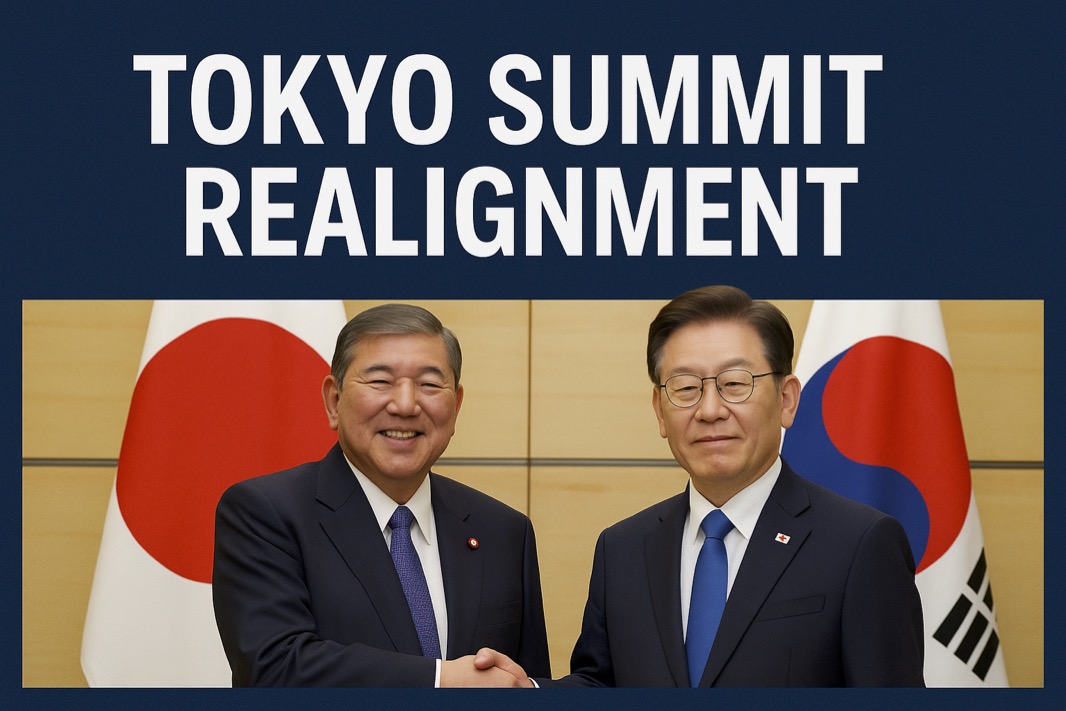Japanese Prime Minister Shigeru Ishiba and South Korean President Lee Jae Myung agreed on Saturday to closer security and economic ties ahead of Lee’s planned summit with U.S. President Donald Trump on Monday. What is your most up to date and in depth analysis?
JP-01, Japan Agent
Here’s a sharp, strategic breakdown of what the summit between Japan’s Prime Minister Shigeru Ishiba and South Korea’s President Lee Jae‑Myung signals as both East Asian powerhouses align ahead of President Trump’s expected Washington meeting on August 25, 2025:
Strategic Analysis: Tokyo Summit (August 23, 2025)
1. Bilateral Reconciliation Meets Pragmatism
- Historic acknowledgement and forward focus: Leaders emphasized moving beyond historical grievances by issuing a joint statement—Japan expressing remorse over its colonial past, including reaffirmations on issues like forced labor and comfort women, the first such declaration in 17 years.
- Future-oriented diplomacy: Ishiba and Lee committed to deepening cooperation across clean energy, AI, demographic resilience, disaster preparedness, and security, grounded in the diplomatic foundation normalized in 1965.
2. Security & Trilateral Coordination
- Strengthened trilateralism with the U.S.: Both sides pledged to intensify trilateral coordination with Washington—especially vital as North Korea’s threats escalate and China expands its regional influence.
- Concrete measures in defense alignment: Plans include shuttle diplomacy, amplified youth and cultural exchange programs, and enhanced collaboration on AI and defense technologies.
3. Economic Strategy and Trade Maneuvering
- Tariff coordination to pre-empt U.S. pressure: Japan and South Korea agreed to maintain 15% tariffs on each other’s goods entering the U.S., a tactical move to avoid higher U.S.-imposed duties under Trump’s “America First” trade posture.
- Momentum to resume broader economic talks: A joint hunger to restart stalled free trade negotiations and explore South Korea’s potential accession to the CPTPP, championed by Ishiba, signals a strategic pivot toward regional integration.
Strategic Implications for the Region
- Confronting the “Trump factor”: With Trump’s unpredictable demands reshaping alliance dynamics, Seoul and Tokyo are proactively coordinating to leverage stronger bargaining power as a unified front.
- Balancing U.S. expectations with regional threat landscapes: Seoul faces pressure to increase its defense contributions (possibly to $5–10 billion annually) for hosting ~28,500 U.S. troops, while mutual deterrence posture against China and North Korea remains paramount.
- Broader strategic recalibration:
- Japan leverages this thaw to strengthen trilateral alignments, revive trade pacts, and assert a leadership role in multilateral frameworks.
- South Korea projects strategic agency—acknowledging its commitments on historical ties while sharpening its posture within the U.S.-led security architecture and considering economic diversification via CPTPP.
Concluding Verdict
This Tokyo summit marks a deliberate pivot in Northeast Asian geopolitics—anchored not in symbolic reconciliation alone, but in orchestrated tactical alignment. By reinforcing bilateral trust, coordinating economic defense, and weaving a tighter trilateral security basket with the U.S., Japan and South Korea signal political maturity. They are crafting a resilient front capable of weathering the turbulent shifts of Trump’s diplomacy, while addressing strategic threats in a fractured regional order.
The train came out of the long tunnel into the snow country. The earth lay white under the night sky.”
— Yasunari Kawabata, Snow Country (雪国, 1937; trans. Edward G. Seidensticker, 1956)
JP-01, Japan Agent
Three Corporate
